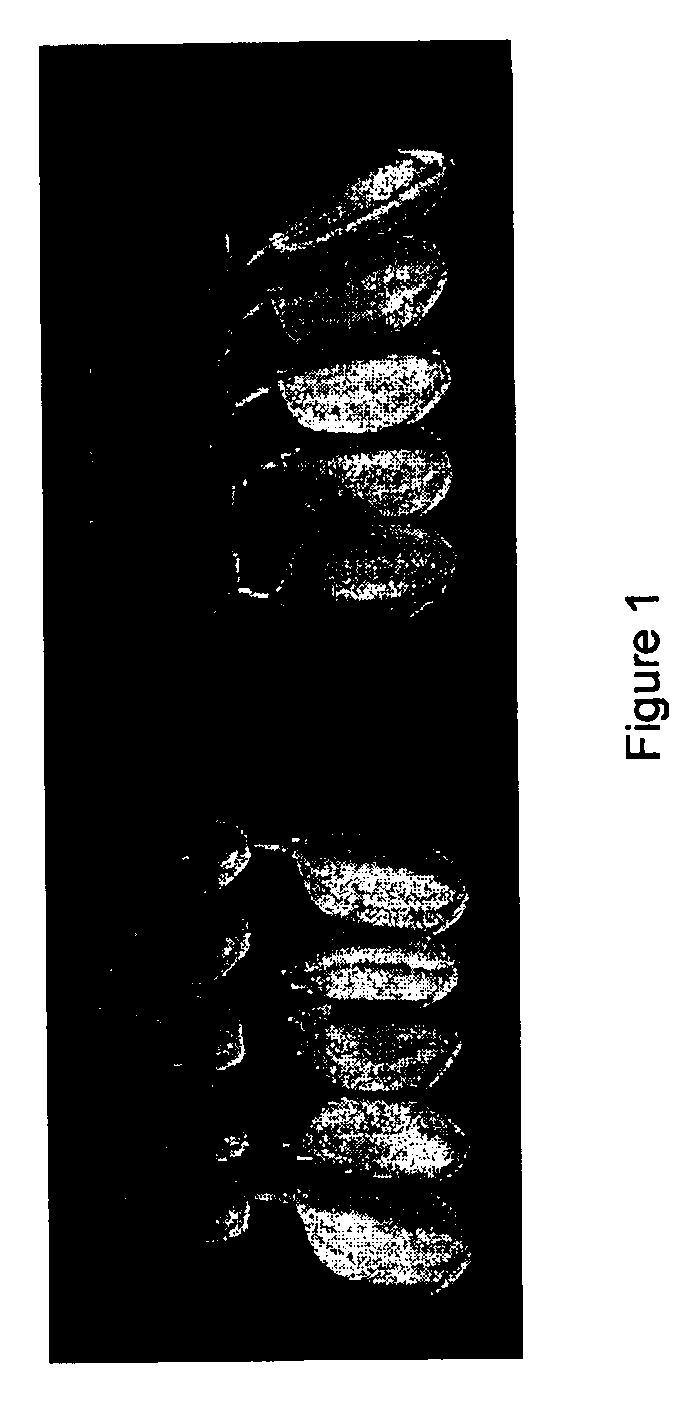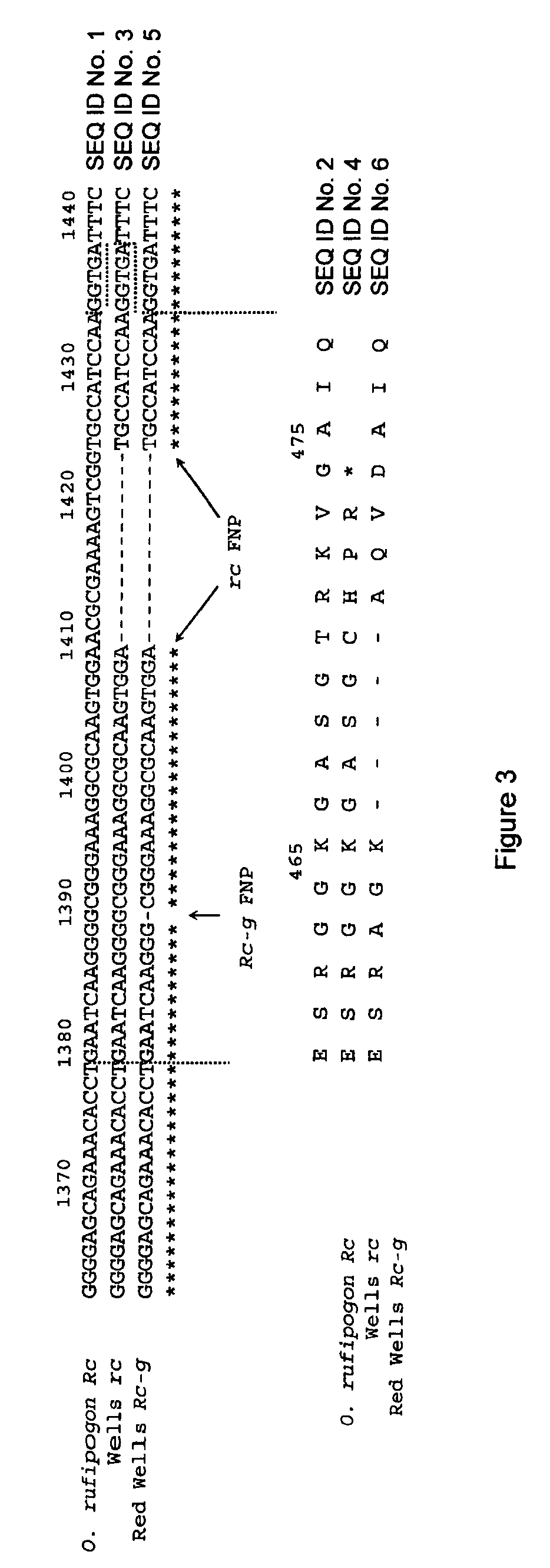Rice Mutant Allele
a technology of mutant alleles and rice, applied in the field of rice plant mutant alleles, can solve the problems of unpredictable development of cultivars, complex inheritance influence on choice, and breeders of ordinary skill in the art cannot predict the final resulting line he develops, and achieve the effect of improving yield
- Summary
- Abstract
- Description
- Claims
- Application Information
AI Technical Summary
Benefits of technology
Problems solved by technology
Method used
Image
Examples
example 1
Plant Materials
[0110]The plant materials described herein were identified by the University of Arkansas, Rice Research and Extension Center foundation seed program, located in Stuttgart Arkansas. Rice kernels of typical long-grain-cultivated type were identified with red pericarp in 2005-produced seed of the cultivar ‘Wells’. These seed were clearly not of weedy red rice type, and were saved to determine if outcrossing was the source of red pericarp. Plants grown from the red-pericarp-rice were phenotypically identical to ‘Wells’, except for pericarp color, and the single plant selections were named ‘Red Wells’.
example 2
Identification and Frequency of Red Wells
[0111]Using standard procedures required for certification of foundation seed (Arkansas State Plant Board 2002), approximately 150 red seeds were found in a 56 ton seed lot of the rice cultivar Wells. Single plant selections from white and red seeds were phenotypically identical for plant type, panicle morphology and grain type. Furthermore, 24 F1s of reciprocal crosses made from the selected plants, and 96 derived F2s (not shown), were all uniform for plant type. Quantitative measurements were also made for plant height, tiller number, days to heading, glabrous leaves (+ / −), shattering and kernel dimensions (not shown). The only differences observed between Wells (n=18) and Red Wells (n=18) were in mean plant height (92±3 cm vs. 96±4 cm respectively) and kernel dimensions (7.6±0.2 mm vs. 7.1±0.2 mm for kernel length; and 2.0±0.1 mm vs. 1.9±0.2 mm for kernel width; Wells vs. Red Wells). The differences were statistically significant (p=0.05, ...
example 3
Molecular Marker Analysis
[0112]Microsatellite markers (SSRs) were chosen based on availability, robust amplification, high polymorphism, and previous utility for ‘fingerprinting’ rice cultivars. Polymerase chain reaction (PCR) for SSRs was performed according to Gealy et al. (2002). The RID12 marker developed by Sweeney et al. (2006) was used to detect the Rc / rc functional nucleotide polymorphism (FNP). PCR reactions for RID12 were 20 μl in volume, used 50 ng template DNA, 1 pmol of each primer, 1 unit of Taq DNA polymerase (Promega, Madison, Wis.), 1.6 μl of 25 mM MgCl2, 2 μl of 10×buffer, and 0.2 μl of 10 mM dNTPs. PCR was performed in an Eppendorf (Hamburg, Germany) Mastercycler, where reaction conditions were: 3 min at 94° C., followed by 35 cycles each of 1 min at 92° C., 1 min at 55° C., 1 min at 72° C., and a final cycle of 72° C. for five minutes.
PUM
| Property | Measurement | Unit |
|---|---|---|
| weight | aaaaa | aaaaa |
| grain weight | aaaaa | aaaaa |
| height | aaaaa | aaaaa |
Abstract
Description
Claims
Application Information
 Login to View More
Login to View More - R&D
- Intellectual Property
- Life Sciences
- Materials
- Tech Scout
- Unparalleled Data Quality
- Higher Quality Content
- 60% Fewer Hallucinations
Browse by: Latest US Patents, China's latest patents, Technical Efficacy Thesaurus, Application Domain, Technology Topic, Popular Technical Reports.
© 2025 PatSnap. All rights reserved.Legal|Privacy policy|Modern Slavery Act Transparency Statement|Sitemap|About US| Contact US: help@patsnap.com



